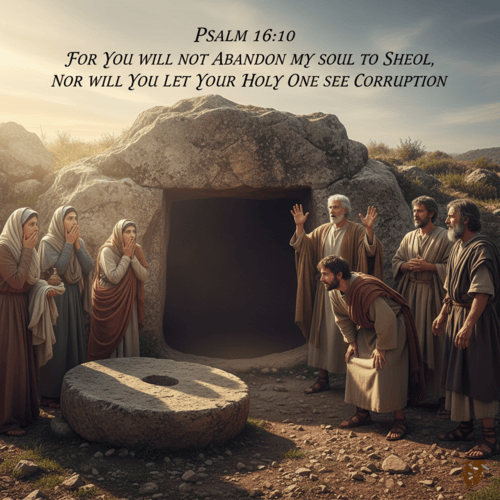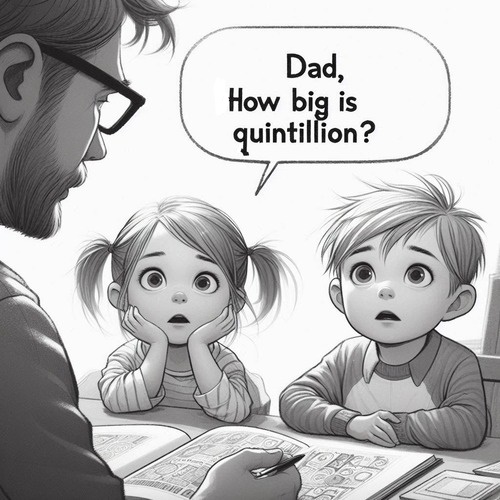The One Man Mystery in Acts 17:26: Is It Adam Or Noah?
When the Apostle Paul stood before the philosophers at Mars Hill, he delivered an insightful statement about human unity: “And he made from one man every nation of mankind to live on all the face of the earth” (Acts 17:26, ESV). But which “one man” did Paul have in mind—Adam or Noah?
The question has far-reaching implications for how we understand human origins, biblical anthropology, and the gospel message itself. Let’s consider the compelling reasons why the Reformed tradition identifies this figure as Adam, the first man.
THE CASE FOR ADAM: REFORMED EXEGETICAL ARGUMENTS
Immediate Textual Context: Paul’s argument in Acts 17:24-31 follows a deliberate theological progression. He begins with God as Creator of “the world and everything in it” (v. 24), then moves to His ongoing providence over creation (v. 25), and finally to His creation of humanity “from one man” (v. 26). The sequence mirrors the creation account in Genesis, naturally pointing to Adam as the primordial human from whom all nations descended.
The Greek phrase “ex henos” (from one) most naturally refers to the ultimate origin of humanity, not a secondary starting point after judgement. Reformed commentators like John Calvin and Matthew Henry consistently interpreted this as referring to Adam, seeing Paul’s argument as grounding human dignity and unity in our common creation.
Coherence with Pauline Anthropology: Throughout his epistles, Paul consistently traces human nature and condition back to Adam. In Romans 5:12-21, he presents Adam as the federal head of humanity through whom sin entered the world. 1 Corinthians 15:22 declares, “For as in Adam all die, so also in Christ shall all be made alive.” The Adamic framework is central to Paul’s theology.
Given Paul’s consistent pattern of referencing Adam when discussing universal human characteristics and origins, it would be unusual for him to suddenly shift to Noah without clear indication. The Athens sermon addresses fundamental questions about human nature and our relationship to God—themes Paul elsewhere anchors in Adam.
Apologetic Strategy: Paul’s audience consisted of Stoic and Epicurean philosophers who held other views about human origins and the relationship between different peoples. By appealing to one common ancestor, Paul was making both an anthropological and theological point: all of humanity shares equal dignity and equal need for God, regardless of ethnic or cultural differences.
Referencing Adam—the first human created in God’s image—provides the strongest foundation for this argument. While Noah represents a new, post-Flood beginning, Adam represents the original divine intention for humanity. This distinction matters when addressing questions of human dignity and God’s universal call to repentance (v. 30).
ADDRESSING THE NOAH ALTERNATIVE
Some scholars argue for Noah based on Acts 17:26b, which mentions God determining “periods and boundaries” for nations. They connect this to the Table of Nations in Genesis 10-11, following the flood. However, this interpretation faces several challenges:
- Chronological Issues: The phrase “made from one man” (aorist tense) suggests a completed action in the past, more naturally referring to the original creation than a post-flood redistribution.
- Theological Implications: While Noah was righteous, he was not the original image-bearer. Grounding human dignity in Noah rather than Adam potentially weakens the anthropological foundation Paul appears to be establishing.
- Contextual Flow: Paul’s progression from cosmic creation to human origins suggests he’s addressing ultimate rather than intermediate causes.
REFORMED SYSTEMATIC IMPLICATIONS
The Reformed tradition has consistently emphasised the federal headship of Adam and its crucial role in understanding both human sinfulness and Christ’s redemptive work. The Westminster Confession states God “created man, male and female, with reasonable and immortal souls” (WCF 4.2), establishing Adam and Eve as the foundation of humanity.
This understanding shapes how we read Acts 17:26. Paul isn’t merely making an anthropological observation but laying theological groundwork. By tracing all nations to Adam, he establishes both universal human dignity (image of God) and universal human need (fallen in Adam).
PRACTICAL APPLICATIONS
Understanding Paul’s reference to Adam rather than Noah has several important implications:
- Gospel Clarity: The Adam-Christ parallel that structures Paul’s theology remains intact, strengthening our understanding of Christ as the last Adam who redeems what the first Adam lost.
- Human Dignity: Grounding human worth in our creation in God’s image through Adam provides the strongest possible foundation for human rights and equality.
- Missions Mandate: If all nations stem from Adam, then all share both the imago Dei and the need for redemption, reinforcing the universal scope of the Great Commission.
CONCLUSION: THE ONE MAN MYSTERY IN ACTS 17:26
While both interpretations have merit, the Reformed tradition’s identification of the “one man” as Adam offers superior exegetical, theological, and practical advantages. This reading maintains consistency with Paul’s broader anthropology, provides the strongest foundation for human dignity, and preserves the crucial Adam-Christ typology that undergirds the gospel.
When Paul stood before the philosophers of Athens, he grounded his call to repentance in humanity’s common origin in Adam—the first man created in God’s image, fallen through disobedience, yet destined for redemption through the last Adam, Jesus Christ.
THE ONE MAN MYSTERY IN ACTS 17:26: RELATED FAQs
What do ancient Greek manuscripts reveal about the “one man” in Acts 17:26? The earliest Greek manuscripts contain textual variants that actually strengthen the Adam interpretation. While some later manuscripts add “blood” (ex henos haimatos), the earliest and most reliable texts simply read “ex henos” (from one), which most naturally refers to one person rather than one substance. Reformed textual critics like Bruce Metzger have noted the shorter reading is more likely original and points directly to one individual ancestor.
- How did John Calvin specifically interpret this passage in his Acts commentary? Calvin explicitly identified the “one man” as Adam in his commentary, arguing Paul was establishing the fundamental unity of human nature against Greco-Roman notions of racial hierarchy. He wrote this passage demonstrates how “all men are of the same flesh and blood” and that ethnic distinctions are “accidental” rather than essential. Calvin saw this as Paul’s way of dismantling pagan ideas about inherent superiority of certain peoples while establishing universal human dignity rooted in creation.
- Did any early Church Fathers interpret this passage as referring to Noah instead? Remarkably, virtually all early Church Fathers who commented on this passage understood it as referring to Adam, including Chrysostom, Augustine, and Theodoret. Augustine specifically connected it to his broader theology of original sin and federal headship. The Noah interpretation appears to be a relatively modern scholarly development, with most historical Christian interpretation consistently favouring Adam as Paul’s referent.
How does this passage relate to the question of human evolution and Reformed theology? Contemporary Reformed scholars like Wayne Grudem and John Frame have noted Acts 17:26 supports the biblical teaching of monogenesis (single human origin) against both ancient polygenetic theories and modern evolutionary accounts of multiple human origins. The passage affirms that all humanity traces back to one actual historical person.
- What role does the Greek concept of “genos” (nation/race) play in understanding this verse? Paul’s use of “ethnos” (nation) rather than “genos” (race/kind) is significant for Reformed interpretation. John Murray and other Reformed exegetes observe “ethnos” emphasises cultural and political distinctions rather than biological differences. This supports the Adam interpretation because it suggests Paul is addressing the formation of diverse peoples from one common ancestor, which better fits the post-Babel dispersion narrative that ultimately traces back to Adam rather than just the post-flood period.
- How do we handle the apparent tension between Acts 17:26 and Genesis 10’s Table of Nations? Reformed theologians like Geerhardus Vos argue there’s no real tension because Genesis 10 describes the immediate post-flood organisation of peoples, while Acts 17:26 addresses ultimate human origins. The “periods and boundaries” Paul mentions can refer to God’s sovereign ordering of history from creation onward, not just post-flood developments. This reading maintains both the Adamic origin of humanity and God’s providential governance through historical events like the flood and Babel dispersion.
What implications does this interpretation have for Reformed missions theology? Reformed missiologists like David Bosch and Andreas Köstenberger have emphasised the Adam interpretation strengthens the theological foundation for cross-cultural evangelism. If all peoples stem from Adam, then all share both the imago Dei and the federal guilt requiring redemption through Christ. This creates a more robust basis for missions than a Noah-based interpretation, which could potentially diminish the universality of human need and dignity. The Adam reading thus supports both the Great Commission’s scope and the gospel’s universal relevance.
THE ONE MAN MYSTERY IN ACTS 17:26: OUR RELATED POSTS
Editor's Pick

Why Do People Hate the Doctrine of Election?
…WHEN THEY REALLY SHOULDN’T Few Bible doctrines provoke stronger reactions than election. The idea that God chose some for salvation [...]

The Doctrine of Providence: Does God Really Govern All Things?
You’re sitting in the doctor’s office when the diagnosis lands like a thunderclap. Your mind races: Why this? Why now? [...]

No Decay, No Defeat: What It Means That Christ’s Body Saw No Corruption
On the Day of Pentecost, Peter stood before thousands and made a startling claim: David's body decayed in the tomb, [...]
SUPPORT US:
Feel the Holy Spirit's gentle nudge to partner with us?
Donate Online:
Account Name: TRUTHS TO DIE FOR FOUNDATION
Account Number: 10243565459
Bank IFSC: IDFB0043391
Bank Name: IDFC FIRST BANK






